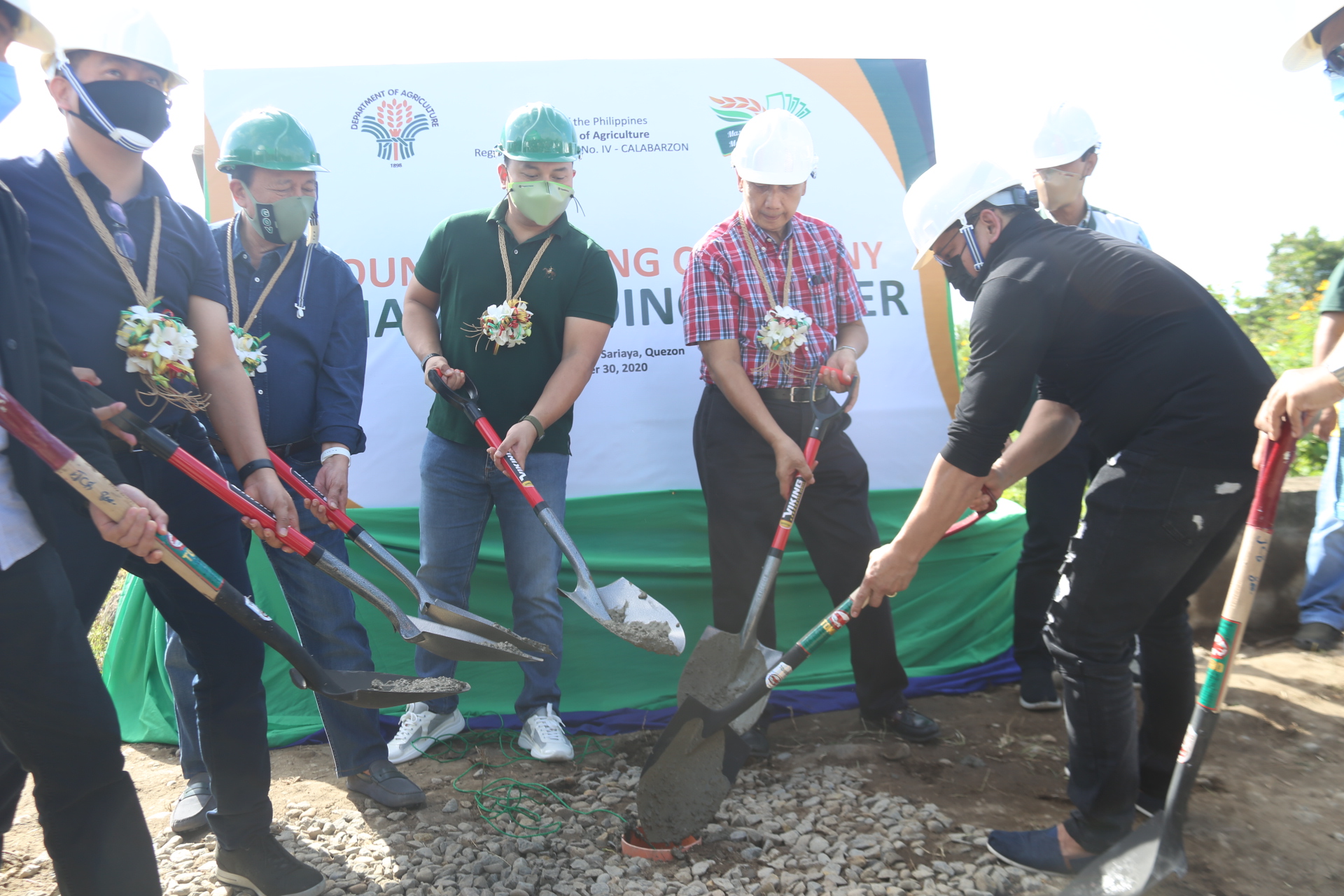
A modern P100-million complex will soon rise in Sariaya, Quezon, to serve as the primary trading post for the produce of farmers and fisherfolk in Southern Luzon and neighboring regions.
Agriculture Secretary William Dar led the groundbreaking ceremony, in Barangay Sampaloc on November 30, 2020, along with Department of Agriculture (DA) Region 4A Director Arnel de Mesa, Quezon Third District Rep. David Suarez, Quezon Governor Danilo Suarez, and Sariaya Mayor Marcelo Gayeta.
Construction of the Sariaya Agricultural Trading Center and Facilities (SATCF) starts in January 2021.
“The vision to have a very important agricultural trading complex here in Sariaya is to transform the province into an agribusiness trading hub for Southern Luzon that will be connected with the various areas or centers where the production would come,” Secretary Dar said in his message.
Funded under the Bayanihan 2, the SATCF will be linked to the DA-Philippine Fisheries Development Authority (PFDA) fishport in Dalahican and other production areas for seamless trading.
“Titingnan po natin kung kulang ang P100M para sa iyong konsepto na maging regional Southern Luzon Trading Complex ay dadagdadagan natin,” Secretary Dar said.
The DA was granted an additional P24-billion budget under the Republic Act No. 11494, also known as the Bayanihan to Recover as One Act or Bayanihan 2, to help address the impacts of the ongoing coronavirus pandemic in the agri-fishery sector.
The DA chief said that the recent typhoons highlighted the need for more postharvest facilities particularly for rice, corn, high-value crops, and even poultry to help ensure the country’s food security requirements.
He added that under the proposed 2021 budget, the DA will provide farmers with needed major interventions in the areas of postharvest, warehousing, cold storage, logistics support, and the like.
“After completing the Sariaya trading complex, kung kinakailangan ay magtatayo rin rito ng food processing center. Popondohan po natin ‘yan,” he added, emphasizing the important role of Quezon province in food production, particularly as a major source of vegetables for markets in Metro Manila.
During the event, the agri chief also approved the proposed second phase of the Sariaya farm-to-market road (FMR) with a length of 15 kilometers. The P250-million undertaking will be funded under the DA’s World Bank-funded Philippine Rural Development Project (PRDP).
A 13.9-kilometer FMR project, also in Sariaya, costing P187 million, was already completed, funded under the PRDP.
The DA chief and local officials also discussed plans for the Quezon province’s coffee industry center, coconut hub, and hatcheries for the mass rearing of high-value fishery species.
“Dapat buksan ng ating mga magsasaka at mangingisda ang kanilang puso at damdamin, at tanggapin nila ang mga makabagong teknolohiya na nais nating ipairal sa buong bansa upang lumalago ang sektor ng agrikultura at pangisdaan. At iyong mga anak natin, the younger generation must be encouraged to join in farming, kasi in five to eight years magre-retire na ang ating mga magsasaka at mangingisda,” Secretary Dar said.
“Marami tayong mga programa para mahikayat natin at ma-engage ang mga kabataan, at sisiguruhin po natin na tuluy-tuloy po lahat itong programa para sa ikauunlad ng sektor ng agrikultura sa bansa,” he added.
“We need young blood in agriculture. They have the defining attributes when it comes to utilizing modern agriculture. They are well connected through electronic devices that can help modernize farming and fishing activities,” concluded the DA chief, who is persistently advocating for the active involvement of the youth in the country’s agri-fishery sector. ### (Gumamela Celes Bejarin, DA-AFID)













